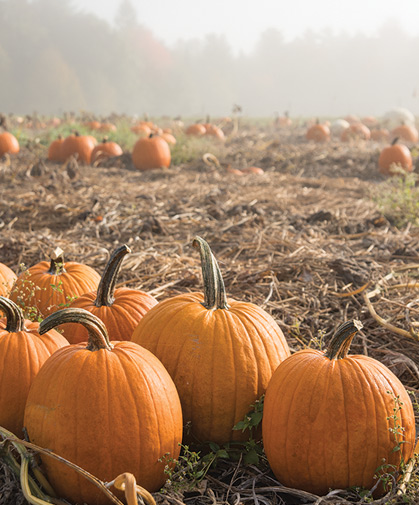- Pumpkin Production Guidelines | Tech Sheet (PDF)
- Pumpkins | Key Growing Information
- Johnny's Pumpkin Types & Varieties | Printable 4-pp Brochure (PDF)
- Jack-o'-Lantern Pumpkin Varieties | Comparison Chart (PDF)
- Pumpkins | Pie Varieties | Comparison Chart (PDF)
- Specialty Pumpkin Varieties | Comparison Chart (PDF)
- White Pumpkin Varieties | Comparison Chart (PDF)
- Top-Performing Pumpkins | Johnny's Educational Webinar Resources
- Webinar Slide Deck | Top-Performing Pumpkins | 15-pp PDF
- Video: Top-Performing Pumpkins for the Market Garden | Johnny's Webinar Series
- Classic Storage Crops | Post-Harvest Handling & Storage Guidelines
- Farm Visit: Mark's Melon Patch – Dawson, Georgia | Johnny's Selected Seeds 40th Anniversary
- Grower Profile: Louie's Pumpkin Patch - Skövde, Sweden | Johnny's Selected Seeds 40th Anniversary
- Eating Quality in Winter Squashes | Why Some Varieties Just Taste Better Than Others
- How to Choose Fall Cucurbits | Edible, Ornamental & Dual-Purpose Pumpkins, Squash & Gourds
- Cucumber Beetle Lure Instructions | Tech Sheet (PDF)
- 'Black Bear' Mini Pumpkin bred by Johnny's
- Video: PMR pumpkins | from Johnny's Selected Seeds
- Bred-by-Johnny's Pumpkin Varieties
Pumpkins - Key Growing Information

SCIENTIFIC NAME:
Cucurbita spp.CULTURE:
Fertile, well-drained soil with a pH of 5.8–6.8 is best.Plastic mulch and fabric row covers (AG-19 grade) can aide plant establishment and exclude insect pests during the seedling stage. Row covers should be removed when plants begin to flower. Poor fruit development may indicate insufficient pollination. Time plantings so that varieties will mature for the fall market. Overexposure to sun in the field after maturity and foliage dieback reduces fruit and handle color quality.

